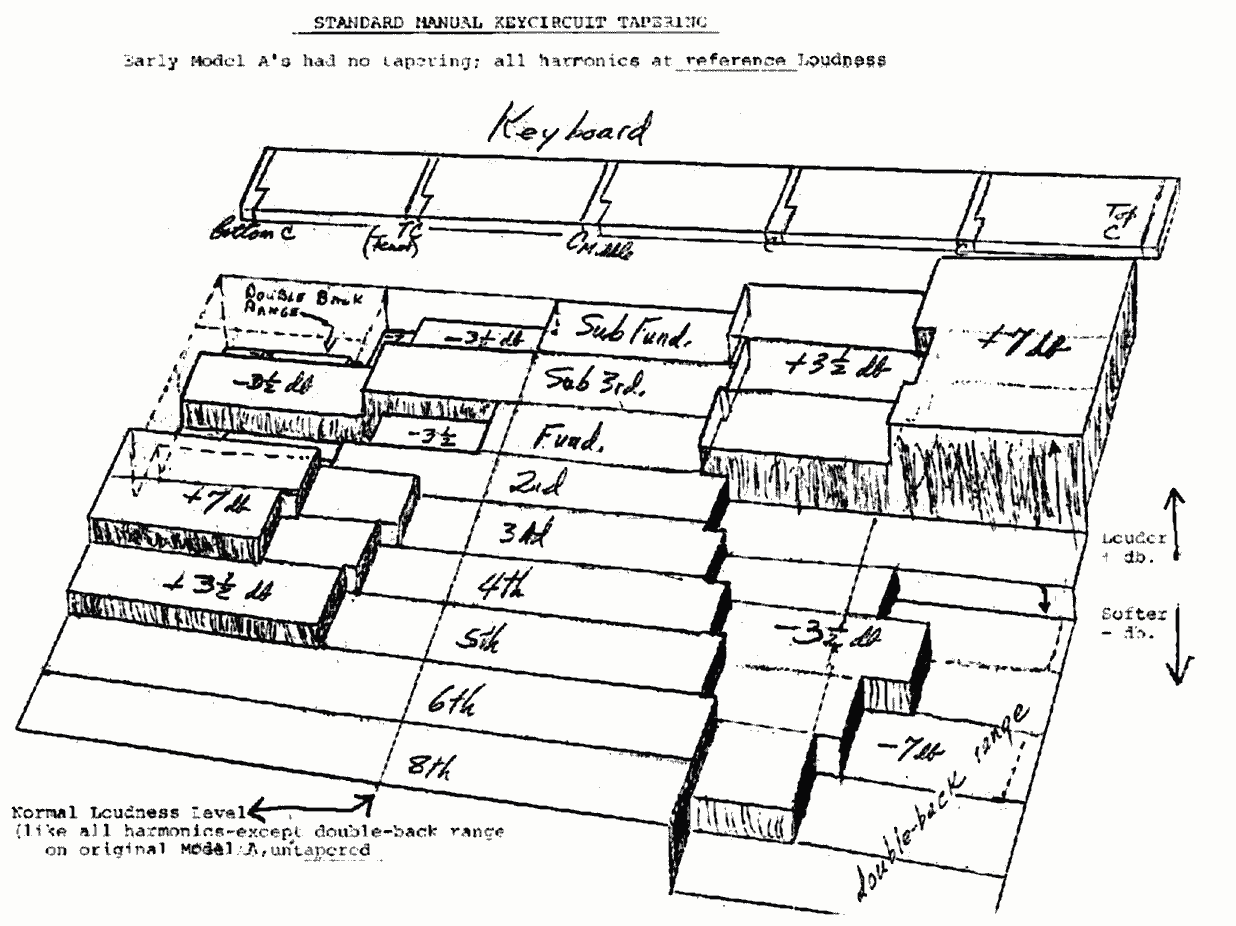The resistance wires in the manuals of Hammond consoles (which connect individual key contacts to the drawbars) are not all of the same resistance. Tapering was used in an attempt to "hide" KeyClick. By providing "pre-emphasis" to the higher harmonics and then rolling off the higher frequencies in the pre-amp, the level of key click present in the signal was reduced.
In contrast, the Hammond spinets (at least the M- series) all have constant resistance resistance wires. In the M-Series, all resistances are 16 ohms. (Sometimes the wires of of differing lengths, but their gauge is varied as well so that the total resistance is the same.)
Carsten Meyer has drawn up this chart showing the tapering on a B3 console compared to a spinet (M- or T-series). Remark by Carsten: I think tapering was not only made for "click reduction" and smooth sound, but also took care of differences in generator impedance (inner resistance). Therefore the "jump" in tapering wire resistance at notes with filter circuit.

Also MikeFulk has provided a scan of this tapering diagram.

The content of this page is Copyright (C) 2000, 2001, 2002 Geoffrey T. Dairiki and
the other authors of the content, whoever they may be.
This is free information and you are welcome redistribute it
under certain conditions; see
http://www.dairiki.org/HammondWiki/opl.html for details.
Absolutely no warrantee is made as to the correctness of
the information on this page.